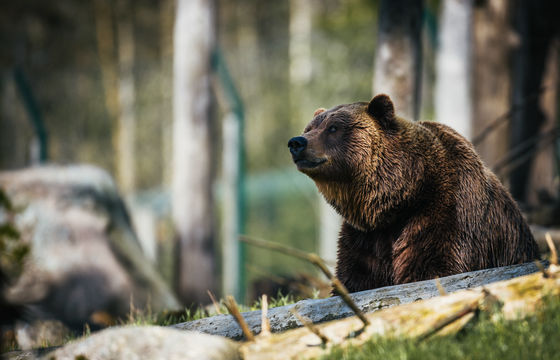Possibility that bear's `` mechanism that can maintain muscle even after hibernation '' will be the key to preventing human muscle atrophy

by
Some animals hibernate in cold, food-poor winters. Bears, bats, rats, etc. hibernate to save physical strength and wait for the coming spring, but among others , Dr. Michael Gotthard of Max Delbruck Molecular Medical Center explains the special `` bear hibernation mechanism '' .
Learning from the bears | MDC Berlin
https://www.mdc-berlin.de/news/news/learning-bears

Of Japan Ussuri brown bear is also the closely related, living in the North American grizzly bear , you can hibernate for many months in the winter period. Grizzly bears begin to wake up from hibernation between March and May, and around September they begin to consume large amounts of nutrients in preparation for hibernation. And grizzly bears hibernate between November and January. During hibernation, the grizzly bear's metabolism and heart rate are reduced compared to normal, and there is no excretion. And because the amount of nitrogen in the blood increases dramatically, insulin sensitivity will increase.
Although the grizzly bear does not move much during hibernation, the grizzly bear's muscles from hibernation do not atrophy ( muscle atrophy ). If, on the other hand, humans were immobile for several months, like a bear during hibernation, the muscles would lose weight. Anyone who has been treated in a hospital bed for a long time due to an injury, etc., should have experienced a muscle atrophy that prevented their body from moving as desired.
A research team led by Dr. Gotthard is investigating why hibernating bears do not cause muscle atrophy, arguing that `` (the mechanism during hibernation of grizzly bears) helps prevent muscle atrophy in humans. '' doing.

by
`` Muscular atrophy is a problem that occurs in many situations, '' said Douaa Mugahid, a member of the research team led by Dr. Gotthard and a postdoctoral fellow at Harvard Medical School, `` how the beauty of this study is in nature. Learning how to maintain muscle function under the tough conditions of hibernation. '
A research team led by Dr. Gotthard obtained and studied hibernating and peaceful grizzly bear muscle samples from Washington State University. 'By combining state-of-the-art sequencing technology with mass spectrometry,' up-regulation 'or' down -regulation 'increases the ability to respond to neurotransmitters and hormones, both during and after hibernation,' Dr. Gotthard said. We wanted to identify genes and proteins. '
In a study, Dr. Gotthard and colleagues found a protein that strongly affects the amino acid metabolism of grizzly bears during hibernation, and the muscle cells of grizzly bears are rich in certain non-essential amino acids (NEAAs). It is clear that

by
Dr. Gotthard said, `` When we tested human and mouse muscle cells that show muscle atrophy, it was found that cell growth could also be stimulated by NEAA, '' says the muscles of the elderly and bedridden. To prevent atrophy, it is not enough to take NEAA in the form of pills or powder.
In addition, Dr. Gotthard says, 'It's obviously important that the muscle itself produces NEAAs, otherwise the amino acids may not get to where they are needed.'
These findings suggest that one way to prevent muscle atrophy is to 'activate metabolic pathways with appropriate drugs and induce human muscle to produce NEAA.'

by James Barr
In addition, Gotthard and colleagues compared gene activity in grizzly bear human mice to find out which neurotransmitter pathways in muscle could activate NEAA. In addition, the genetic information used in the survey was from people with the potential for muscular atrophy, such as the elderly and bedridden patients, and those from mice with muscular atrophy. Dr. Gotthard said, 'I wanted to know how the genes make different adjustments in hibernating and non-hibernating animals,' as to why they compared gene activity in grizzly bears, humans and mice.
In addition, the research team has identified 'several genes affecting muscle atrophy' in the investigation, and plans to investigate these in experiments using mice. It is to be noted that 'some of the genes that affect the muscle atrophy' is, of genes involved in the metabolism of glucose and amino acid PDK4 and SERPINF1 , circadian rhythm of genes related to RORA are included, such as, 'These We want to see the effect of inactivating genes, 'said Dr. Gotthard.
Related Posts:







